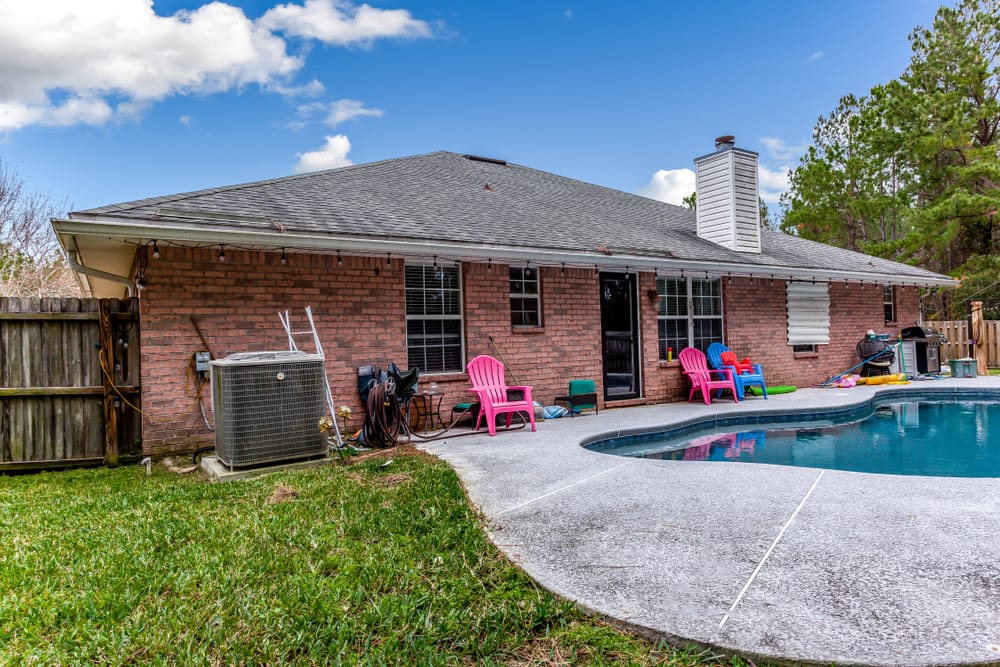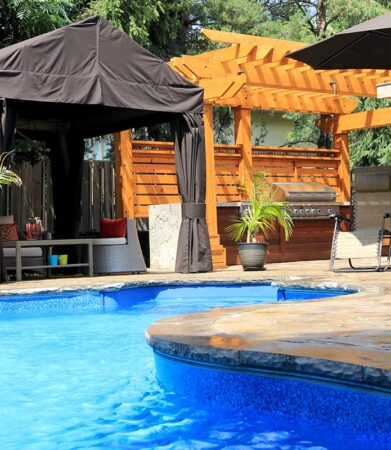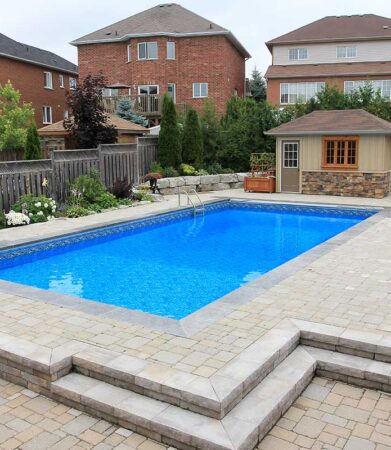
If you have a pool, you probably have children living at home. If you have children living at home, you’ve probably been waiting for this day to come ever since everyone hunkered down to quarantine for COVID-19. What day is that? The day you open your pool so you have at least one more thing for your family to do while in quarantine.
But if you’ve never done it before, and even if you have, you might be wondering how to open inground pools DIY style. Properly opening your pool protects the pool and equipment and preserves it for a longer time. Of course, periodic professional swimming pool maintenance is necessary, but here’s what you can do in the meantime!
10 Steps to DIY How To Open Inground Swimming Pools
- Clean Your Pool Cover & Remove It – You may need a partner to help with the removal of the cover. But before you take it off, you need to clear off as much dirt, water and debris as you can from the cover. If you have standing water on the cover, you can use your pool’s vacuum to remove it.
Remove the cover in a way that prevents the remaining dirt, debris and water from getting into the pool. That will make it easier to do step #2. - Skim the Pool – This isn’t the only pool cleaning you’ll do before you get into the swim. This is just to remove any larger debris, clumps of leaves or anything else that may clog your filtration system when you start it.
- Remove Winter Drain Plugs – The plugs you put in place last fall to prevent water from getting into pipes should be removed to allow water to flow.
- Add Attachments & Accessories – Reinstall pool equipment and accessories like the diving board, water slide and ladders. Even if you cleaned them when you put them away last year, you should at least wipe then down to keep any more debris from getting into the pool.
- Top Up the Water Level – Use your garden hose to fill your pool until it reaches the proper level.
- Get the Pump & Filter System Ready To Go – Start by reinstalling the drain plugs in the pump and filter, making sure that all seals are tight. Open the return side valves to give the water that’s pulled into the pump somewhere to go. Inspect the filter and wash it as needed. Make sure your circuit breaker for the pool equipment is on.
- Balance the Water – Use a pool water test kit to check the chlorine levels and levels of pool chemicals in the pool. Adjust the pool’s alkalinity, pH and calcium levels.
- Clean the Pool – This is a deeper cleaning than the one you did earlier and includes brushing the pool’s surfaces to clean away algae and dirt. Vacuum the pool to remove all the sediment.
- Shock the Pool – Make sure to use goggles and gloves before getting everything ready to shock the pool with chlorine. Pour the chlorine directly into the pool at different points around the pool.
- Start the Filtration System and Run It for 24 Hours – This will let the shock settle and remove any remaining dirt. After 24 hours, test the pool chemicals one more time. If they are in the proper ranges, you’re in the swim!
If you enjoyed this post, check out our recent article “How to Enjoy Your Pool this Summer”.




